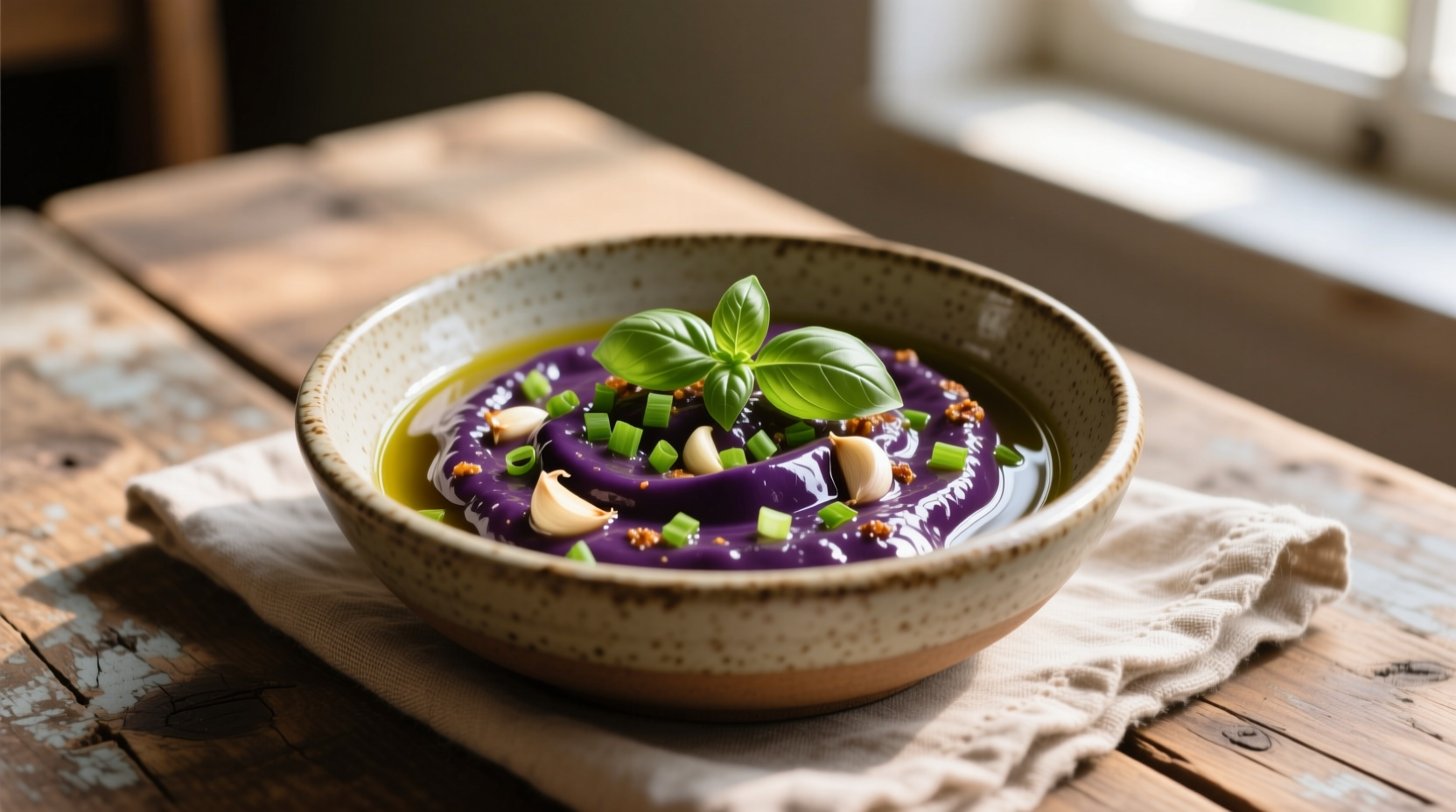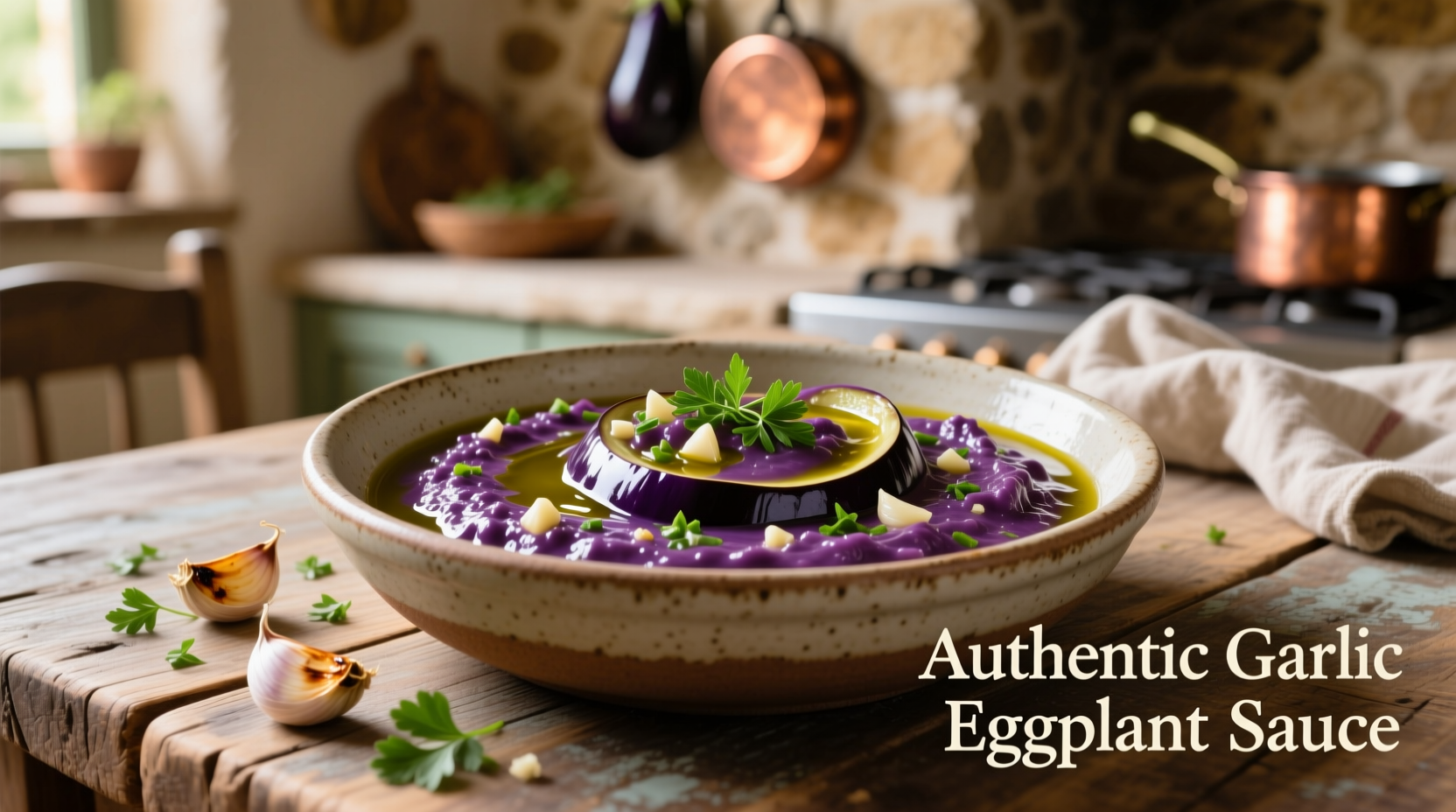Garlic eggplant sauce is a versatile condiment made from roasted or fried eggplant blended with garlic, oil, and seasonings. This simple preparation yields a rich, creamy sauce perfect for dipping, spreading, or enhancing main dishes across Chinese, Mediterranean, and Middle Eastern cuisines.
Discover how to create the perfect garlic eggplant sauce with our comprehensive guide. You'll learn authentic preparation techniques, regional variations, and practical applications that transform this humble ingredient into a culinary staple. Whether you're a beginner cook or experienced chef, these insights will help you master garlic eggplant sauce preparation while avoiding common pitfalls that ruin texture and flavor.
What Makes Garlic Eggplant Sauce Special
Eggplant's unique ability to absorb flavors while maintaining structure makes it ideal for sauce creation. When combined with garlic's pungent aroma, the result is a complex flavor profile that enhances numerous dishes. Unlike many store-bought alternatives, homemade garlic eggplant sauce contains no preservatives and offers superior freshness and customization.
| Regional Variation | Key Ingredients | Texture Profile | Primary Culinary Use |
|---|---|---|---|
| Chinese (Qiezi Jiang) | Eggplant, garlic, soy sauce, chili oil | Slightly chunky | Noodle topping, dumpling dip |
| Mediterranean (Similar to Baba Ganoush) | Eggplant, garlic, tahini, lemon juice | Smooth and creamy | Dip with pita bread |
| Middle Eastern | Eggplant, garlic, olive oil, cumin | Velvety | Mezze platter component |
Your Step-by-Step Garlic Eggplant Sauce Preparation
Essential Ingredients Checklist
For authentic Chinese-style garlic eggplant sauce (yields 2 cups):
- 2 medium eggplants (about 1.5 lbs)
- 6-8 garlic cloves, minced
- 3 tablespoons neutral oil (like grapeseed)
- 2 tablespoons soy sauce
- 1 tablespoon rice vinegar
- 1 teaspoon sugar
- 1/2 teaspoon sesame oil
- 1/4 teaspoon chili flakes (optional)
Preparation Process
- Prepare the eggplant: Cut eggplants into 1-inch cubes. Salt generously and let sit for 30 minutes to draw out moisture and bitterness. Rinse and pat dry thoroughly.
- Cook the eggplant: Heat oil in wok over medium-high heat. Fry eggplant in batches until golden brown and tender (about 8-10 minutes per batch). Avoid overcrowding.
- Make the garlic base: In same wok, add minced garlic and stir-fry for 30 seconds until fragrant but not browned.
- Combine ingredients: Return all eggplant to wok. Add soy sauce, rice vinegar, sugar, sesame oil, and chili flakes. Stir gently to combine.
- Simmer: Reduce heat to low and simmer for 5-7 minutes, allowing flavors to meld. Remove from heat.
- Cool and serve: Let cool slightly before serving. For smoother texture, pulse briefly in food processor.

Regional Variations Worth Exploring
Eggplant's journey from its native India to global kitchens created distinct preparation styles. According to food historians at the Oxford Symposium on Food and Cookery, eggplant appeared in Chinese cuisine around the 5th century CE, while Mediterranean adoption occurred much later through Arab trade routes.
Chinese Style (Qiezi Jiang): Features a slightly chunky texture with pronounced garlic and soy notes. Perfect as a noodle topping or dumpling dip. The key is high-heat wok cooking that creates complex Maillard reactions.
Mediterranean Approach: Similar to baba ganoush but with extra garlic. Roast eggplants whole over open flame for smoky flavor, then blend with tahini, lemon juice, and abundant garlic. This version creates a smoother texture ideal for dipping.
Provençal Variation: French culinary tradition incorporates herbs de Provence and olive oil. This version works beautifully as a sandwich spread or vegetable accompaniment.
Practical Applications in Your Kitchen
Understanding context boundaries enhances your garlic eggplant sauce experience. Food safety guidelines from the FDA indicate that properly stored eggplant-based sauces remain safe for 5-7 days refrigerated. However, texture and flavor peak within the first 48 hours.
Best Pairings:
- Noodles: Toss with cold sesame noodles or rice vermicelli
- Proteins: Serve alongside grilled fish or chicken
- Appetizers: Use as dip for vegetable crudités or spring rolls
- Sandwiches: Spread on wraps or baguettes for added moisture
Avoid These Common Mistakes:
- Skipping the salting step (leads to bitter, watery sauce)
- Overcooking garlic (creates burnt, acrid flavor)
- Using insufficient seasoning (eggplant needs bold flavors)
- Storing at room temperature (risk of bacterial growth)
Storage Guidelines for Maximum Freshness
Proper storage extends your garlic eggplant sauce's shelf life while maintaining quality. The National Center for Home Food Preservation recommends:
- Refrigeration: Store in airtight container for 5-7 days
- Freezing: Portion into ice cube trays, then transfer to freezer bags for up to 3 months
- Reviving: Add a splash of water or oil when reheating to restore texture
For food safety, always use clean utensils when serving and avoid double-dipping. Discard sauce showing signs of mold, off-odors, or unusual texture changes.
Troubleshooting Your Garlic Eggplant Sauce
Encountering issues? These solutions address common problems:
- Too watery: Drain excess liquid after salting eggplant. If already prepared, return to wok and simmer to evaporate moisture.
- Bitter taste: Ensure proper salting time (30 minutes minimum) and thorough rinsing. Choose younger, smaller eggplants when possible.
- Dull flavor: Boost with additional garlic, a splash of rice vinegar, or pinch of sugar to balance.
- Texture too chunky: Pulse briefly in food processor, but avoid over-processing which can make sauce gummy.
Expanding Your Culinary Repertoire
Once comfortable with the basic recipe, experiment with these professional chef techniques:
- Add roasted red peppers for sweetness and color variation
- Infuse oil with star anise before cooking garlic for subtle complexity
- Stir in toasted sesame seeds for added crunch and visual appeal
- Create a vegan version by ensuring all ingredients meet dietary requirements
Remember that garlic eggplant sauce improves in flavor after resting for several hours, allowing flavors to meld. Prepare it a day ahead for optimal taste when possible.











 浙公网安备
33010002000092号
浙公网安备
33010002000092号 浙B2-20120091-4
浙B2-20120091-4